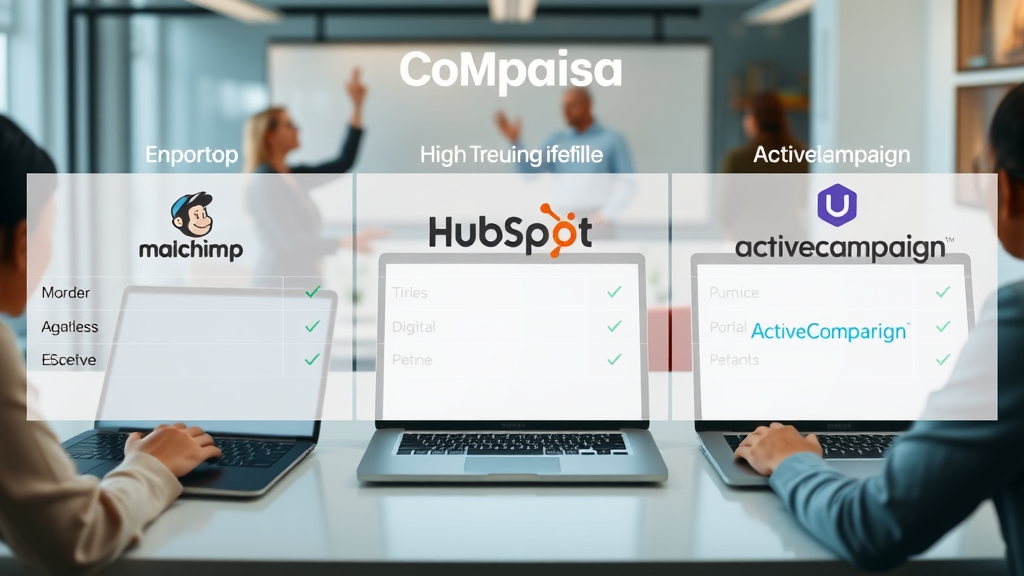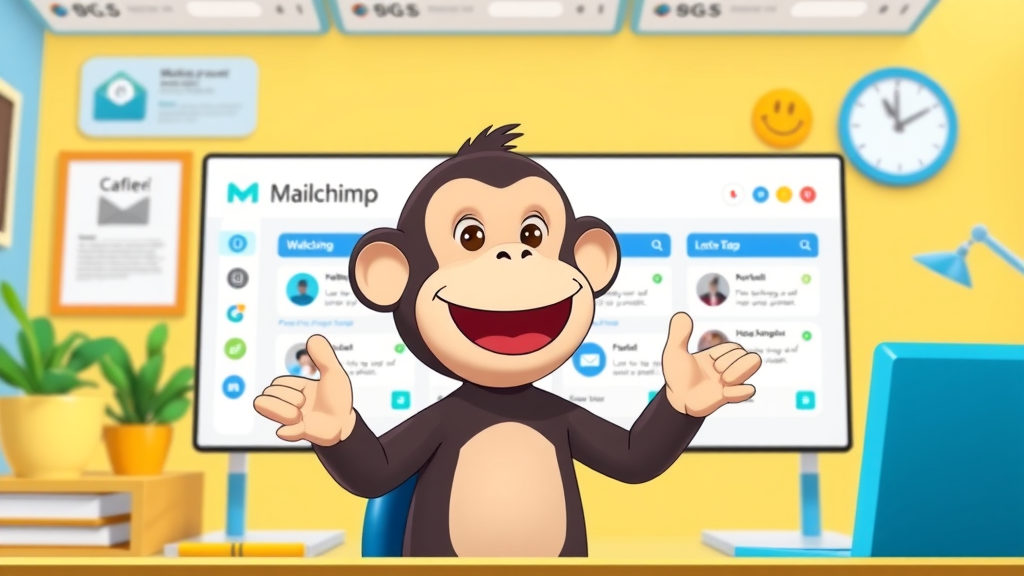Did you know that automated email campaigns can boost conversion rates by over 200% and drive more than 20% of total business revenue for many brands? If the majority of your leads go cold after a website visit, you’re missing game-changing opportunities. It’s time to put your lead generation on autopilot and reclaim every missed sale.
Why Automated Email Campaigns Are the Backbone of Modern Email Marketing
Automated email campaigns have become the lifeblood of modern email marketing due to their proven ability to engage prospects with precise timing, personalized messaging, and scalable outreach. Unlike traditional blasts that often end up in the spam folder or go unnoticed, well-crafted automated emails deliver relevant content at every stage of the customer journey—helping you nurture leads, convert new customers, and retain loyal fans.
Consider this: businesses using email marketing automation experience up to a 53% higher open rate and see consistent lifts in click-through rates compared to manual campaigns. By leveraging automation tools, you can continuously send targeted messages—including product recommendations, abandoned cart reminders, and onboarding sequences—without lifting a finger once the workflows are set. This creates ongoing engagement that’s crucial for today’s fast-moving sales funnel.
Ultimately, automated email campaigns allow companies of any size to scale their marketing efforts, maintain a steady connection with their audience, and move leads seamlessly through the funnel—all while freeing up valuable time and resources to focus on strategy, creativity, and growth.
Startling Email Automation Statistics That Will Change Your Perspective
- Companies leveraging email automation report a 451% increase in qualified leads.
- The average open rate for automated emails is 29.8%, compared to just 18% for manual marketing emails.
- Automated emails drive 320% more revenue than non-targeted campaigns.
- Abandoned cart email campaigns recover up to 10% of lost orders.
- Over 70% of businesses consider email marketing automation essential to their overall marketing strategy.
- Email automation tools save teams up to 30% of their workweek managing audience communications.

Understanding Automated Email Campaigns and Email Automation
What Is an Automated Email Campaign? (PAA: What is an automated email campaign?)
An automated email campaign is a pre-scheduled, rule-based sequence of marketing emails sent to contacts, such as leads or customers, at specific times or in response to particular actions. These emails are triggered automatically—whether that’s on a subscriber’s birthday, after a purchase, or when they abandon their online cart—ensuring each recipient only receives relevant, timely messages.
Unlike one-off newsletters or mass blasts, automated emails use customer data and behavioral cues to personalize the user experience. For example, a well-designed email series might welcome new subscribers, offer exclusive discounts based on shopping history, or guide users through an onboarding flow. This targeted approach helps nurture leads and convert more prospects into loyal customers—without requiring constant manual intervention.

How Does Email Automation Fit into Your Marketing Strategy?
Email automation is at the heart of successful marketing automation strategies, seamlessly integrating with your existing marketing campaigns and sales systems. When set up correctly, an automation tool can trigger specific emails based on real-time data—like purchases, downloads, or missed checkouts—ensuring your content always reaches people when it’s most relevant.
By embedding email automation into your overall strategy, you create a robust sales funnel that continually nurtures leads, encourages conversions, and increases customer lifetime value. Whether you’re running a complex e-commerce platform or a service-based business, automation enables you to stay connected with every segment of your audience, maintaining personalized communication without manual oversight.
Incorporating email automation also supports broader customer relationship efforts. With data-driven insights, you can refine your marketing emails , adjust your customer journey mapping, and optimize the way subscribers move from awareness to advocacy. The result? Stronger engagement, fewer missed sales, and higher brand loyalty.
Automated Emails vs. Traditional Email Campaigns
| Type | Key Features | Pros | Cons |
|---|---|---|---|
| Automated Email Campaigns | Rule-based workflows, personalization, behavioral triggers, drip campaigns, ongoing customer journey nurture | High engagement, saves time, scalable, targeted messages, greater ROI | Requires up-front setup, may need complex automation tools , relies on quality data |
| Traditional Email Campaigns | Manual sends, single blasts, broad segments, limited personalization | Simple to launch, good for announcements or time-sensitive offers | Lower engagement and open rate , easily ignored, time-consuming |
| Hybrid Strategies | Combines manual with automated emails, uses both broad and targeted messaging | Flexible, can address all audience needs, blends automation with human touch | Can be resource-intensive, may need careful planning to avoid overlap |
Email Automation Tools: Choosing the Right Solution
Top Email Automation Tools for Automated Email Campaigns in 2024 (PAA: What is the best email automation?)
- Mailchimp: User-friendly automation tool ideal for small and medium businesses seeking robust features and scalable pricing.
- HubSpot: An all-in-one marketing automation tool with powerful CRM integration, perfect for advanced segmentation and multi-step nurture sequences.
- ActiveCampaign: Known for its flexible automations, deep personalization, and excellent for drip campaigns and advanced workflows.
- ConvertKit: Designed for creators and bloggers who need flexible, visual email automation with simple subscriber management.
- Klaviyo: E-commerce-focused platform with stellar product recommendation and abandoned cart workflows for Shopify, Magento, and WooCommerce stores.

What Makes an Effective Email Automation Tool for Successful Email Campaigns
An effective email automation tool should combine ease of use with smart, customizable automation features. Look for platforms offering drag-and-drop workflow builders, behavioral triggers, A/B testing (such as varying the subject line ), and deep integration with your existing marketing platform or CRM. Advanced segmentation options, detailed analytics, and compliance features (like GDPR and CAN-SPAM settings) are key for running successful, scalable email campaigns .
The best tools also provide templates for common automated emails —such as abandoned cart reminders, product recommendations , and personalized onboarding sequences. Before committing, consider whether the software can manage your current email list size, support dynamic customer journeys , and automate reporting so you always know your open rate , click-through rate, and ROI.
Step-by-Step Guide: How to Create Automated Email Campaigns (PAA: How do I create an automated email system?)
Building Your Email List and Segmentation Strategies
- Create enticing lead magnets to capture email addresses from website visitors and social media followers.
- Regularly clean and validate your email list to ensure high deliverability and avoid spam traps.
- Segment your audience based on demographics, purchase behavior, engagement levels, and interests.
- Use tags and fields in your automation tool to personalize email campaigns for each subscriber group.
- Monitor list growth and segment performance to continually optimize your strategy for better open rates and conversions.

Crafting Compelling Subject Lines and Personalized Emails
- Write subject lines that pique curiosity—use action words, numbers, and personalize with the recipient’s name or preference.
- Test multiple variations of your subject line using A/B and multivariate testing to maximize your open rate .
- Use behavioral data to trigger personalized emails —such as browsing history, cart abandonment, or prior purchases.
- Incorporate dynamic content in your marketing emails , like personalized product recommendations or location-based offers.
- Remember, even small tweaks in the subject lines or body content of automated emails can substantially lift engagement.

Designing Automated Email Series: Drip Campaigns and Customer Journeys
- Map out your drip campaign strategy by listing every touchpoint—welcome, nurture, engagement, reactivation, and upsell emails.
- Structure each email series to align with your sales funnel, ensuring content matches the subscriber’s stage in the customer journey .
- Automate follow-ups after specific actions (downloads, purchases, or webinar sign-ups) to guide leads closer to conversion.
- Monitor engagement on each step and adjust timing or messaging for higher effectiveness in your marketing campaign .
Importing and Automating with Your Chosen Email Automation Tool
- Import your cleaned and segmented email list into your email automation tool .
- Set up automation triggers—such as form submissions, website visits, or cart abandonment —to send the right emails at the perfect moment.
- Schedule workflow timing, frequency, and automate product recommendations for new and returning customers.
- Leverage built-in analytics to review open rates , click rates, and conversion data for continuous optimization of your automation work .

Best Practices for Automated Email Campaigns
- Always perform A/B testing on subject lines and content before finalizing your email campaign workflows.
- Follow list hygiene practices, regularly removing inactive or invalid contacts to improve sender reputation.
- Optimize sending times using audience behavior data to maximize open rates and avoid spamming subscribers.
- Stay compliant with GDPR and CAN-SPAM by including clear unsubscribe links and getting explicit opt-ins.
- Continually update your drip campaign workflows with fresh content and offers based on subscriber feedback and analytics.
Real-Life Examples of High-Converting Automated Email Campaigns
Abandoned Cart Series: Recovering Lost Revenue
Studies show that over 69% of online shopping carts are abandoned before checkout. By implementing an abandoned cart email series—automatically reminding shoppers of what they’ve left behind—you can recover up to 10% of lost sales. A well-timed, personalized abandoned cart email series includes a reminder, a follow-up with a potential discount, and a final call to action, gently nudging customers to complete their purchase.
Using automation tools , these emails are triggered moments after cart abandonment, ensuring high visibility and relevance. The best-performing brands use dynamic content, product images, and urgency-driven subject lines to boost completion rates. Integrating a product recommendation or relevant add-ons can further increase your average order value.

Product Recommendation and Upsell Campaigns
Product recommendation emails leverage past browsing or purchase history to suggest items your subscribers are most likely to buy next. These personalized messages use advanced segmentation in your email automation tool to dynamically insert best-fit offers into each email—significantly improving conversion rates.
Effective upsell or cross-sell campaigns can turn a one-time customer into a repeat buyer, moving them deeper into your sales funnel and boosting overall profitability. By automating this process with smart recommendations and compelling copy, you not only provide value to the customer but also maximize your marketing ROI.
Onboarding and Welcome Email Series
The first impression matters. Automated onboarding or welcome email series introduce new subscribers to your brand, products, and community. These multi-step email campaigns are triggered as soon as someone joins your list and guide users through important steps: setting up a profile, using a new feature, or taking advantage of exclusive discounts.
Well-crafted onboarding series also help set expectations for future marketing emails , boosting trust and improving long-term engagement. They lay the foundation for stronger customer relationships , ensuring each new member feels valued from day one.

(Watch our in-depth explainer video to see an automated campaign in action—from list import to workflow design and performance monitoring.)
Metrics to Measure the Success of Automated Email Campaigns
Key Performance Indicators for Email Automation
- Open Rate: Percentage of recipients who open your emails; a key sign of effective subject lines .
- Click-Through Rate (CTR): Measures engagement by tracking how many users click on your email content or CTAs.
- Conversion Rate: Number of recipients who take the desired action, like purchasing or signing up.
- Bounce Rate: Rate of emails that fail to deliver; keeping this low is critical for good deliverability.
- Unsubscribe Rate: Indicates whether your content remains relevant to your audience.
- Revenue per Email: Direct ROI metric tying email sends to generated revenue.

Using Analytics from Marketing Automation Tools
- Leverage built-in analytics dashboards in tools like Mailchimp or HubSpot to review key metrics at a glance.
- Interpret trends in your open rates and CTR to identify which automated email campaigns are generating the best results.
- Analyze subscriber activity to refine segmentation, personalizations, and automation work for higher conversions.
- Test different workflows and measure the impact of each change in your email automation tool to drive continual improvement.
Overcoming Common Challenges in Automated Email Campaigns
Avoiding the Pitfalls of Automated Emails: Personalization and Relevance
- Avoid generic or overly frequent messaging, which leads to subscriber fatigue and decreased engagement.
- Continuously update and segment your email list so that only highly relevant content reaches each recipient.
- Maintain a balance between automation and real human touch—especially in high-stakes customer relationship communications.
- Test and personalize content for different audiences, making your marketing emails feel timely and tailored every time.
Ensuring Deliverability and Compliance in Email Marketing
- Adhere strictly to GDPR and CAN-SPAM laws by obtaining consent, offering easy unsubscribes, and including necessary business details.
- Monitor bounce rates and adjust sending patterns to prevent your emails from being marked as spam.
- Ensure your automation tools provide compliance monitoring and deliverability reports.
- Run spam filter tests before launching major marketing campaigns or workflows.

Scaling Your Automated Email Campaigns with Advanced Automation Tools
As your business grows, advanced automation tools let you scale email campaigns across products, regions, and teams without sacrificing personalization or accuracy. Look for enterprise-grade features such as adaptive send times, AI-powered content, complex customer journeys , and multi-channel automation. These capabilities ensure your brand consistently delivers value—even as your email list expands into the thousands or millions.
Investing in scalable, integration-friendly marketing automation ensures your campaigns stay relevant, effective, and fully aligned with evolving business goals.
Does Mailchimp Do Automated Emails? (PAA: Does Mailchimp do automated emails?)

Yes, Mailchimp is a popular email automation tool that makes it easy for businesses of any size to set up automated email campaigns . With features like pre-built automation workflows, drag-and-drop designers, and robust analytics, Mailchimp can automate everything from welcome series and abandoned cart emails to advanced multi-step drip campaigns and product recommendations.
Whether you’re growing your email list or optimizing your customer journey, Mailchimp’s intuitive interface and flexible integrations provide all the capabilities required for high-performing email marketing automation .
Quotes from Email Marketing Experts on Automated Email Campaigns
"Automation is the engine behind scalable, meaningful conversations. Successful brands use automated email campaigns not just to reach customers, but to build relationships that drive revenue." – Digital Marketing Strategist
"The greatest benefit of automated email campaigns is the consistent delivery of value to every subscriber at exactly the right moment." – Email Marketing Consultant
Checklist: Launching Automated Email Campaigns for Your Business
- Define clear goals for your automated email campaigns —lead generation, sales, onboarding, or retention.
- Choose an email automation tool that fits your list size, workflow complexity, and analytics needs.
- Build and segment your email list based on behavior, interests, and demographics.
- Create compelling email content—testing different subject lines and personalizations for optimal open rates .
- Set up automation triggers and rules aligned with your customer journey .
- Launch your drip campaigns and monitor performance using built-in analytics.
- Continuously optimize—update content, refine segments, and A/B test elements to maximize results.
- Ensure compliance with all relevant privacy and spam laws (GDPR, CAN-SPAM).
- Scale your campaigns as your email list grows or new offers are developed.
(Watch our walkthrough for real-world optimization tips—improving segmentation, timing, and creative for industry-leading campaigns.)
People Also Ask: Automated Email Campaigns Deep Dive
What is the best email automation?
The best email automation tool depends on your business needs. Mailchimp and HubSpot are top picks for user-friendliness and robust features, while ActiveCampaign and Klaviyo offer advanced workflows for e-commerce and drip campaigns. Choose a solution that integrates with your existing marketing platform, handles segmentation, and offers strong analytics for optimizing email campaigns.
How do I create an automated email system?
Start by selecting a reliable email automation tool and importing your segmented email list. Set up workflow triggers—such as signup confirmations, purchases, or cart abandonment—then craft engaging, personalized content. Test your subject lines and emails, set compliance and deliverability measures, and monitor performance to continually refine your system.
Does Mailchimp do automated emails?
Absolutely! Mailchimp allows you to create automated emails for nearly every campaign need—welcome series, product recommendations, follow-ups, and more. Its platform simplifies workflow setup, analytics, and integration with ecommerce and CRM tools for high-performing marketing automation.
FAQs on Automated Email Campaigns and Email Automation
- What are drip campaigns? A drip campaign is a sequence of automated emails sent to subscribers at set intervals, designed to nurture leads and move them through the sales funnel.
- How does segmentation work in automation? Segmentation divides your email list into groups based on behavior or demographics, allowing for targeted, personalized messages at every stage of the customer journey.
- How often should you update your automated emails? Review and update automated email campaigns quarterly (at minimum) to ensure content remains relevant, timely, and effective.
- What analytics are most vital to monitor? Key data points include open rate, click-through rate, conversion rate, bounce rate, and revenue per email. These help measure overall campaign health and ROI.
- Is automation suitable for small businesses? Yes, even small businesses can benefit from automated emails. Affordable tools and pre-built workflows make it easy to set up relevant, timely communications for increased engagement and sales.
(See firsthand how analytics dashboards, workflow triggers, and A/B test results impact your campaigns in our real-time demonstration video.)
Ready to Grow Your Business with Automated Email Campaigns?
Ready to grow your business and connect with more customers? Book your free marketing strategy with our team today. Call: 314-560-4642 or visit: https://marketingconnectionsllc.com/get-in-touch
To enhance your understanding of automated email campaigns, consider exploring the following resources:
-
“Email Automation: Complete Beginner’s Guide 2025” : This comprehensive guide delves into the benefits of email automation, including higher engagement rates and improved customer retention. It also provides practical strategies for implementing automated email sequences effectively. ( omnisend.com )
-
“Email Marketing Automation: The Ultimate Guide (2022 Updated)” : This resource offers an in-depth look at selecting the right tools for automating your email marketing efforts. It reviews various platforms, highlighting their features and suitability for different business needs, aiding in making an informed decision. ( outfunnel.com )
If you’re serious about leveraging automated email campaigns to boost your marketing efficiency and drive sales, these resources will provide valuable insights and practical guidance.
 Add Row
Add Row  Add
Add 






Write A Comment